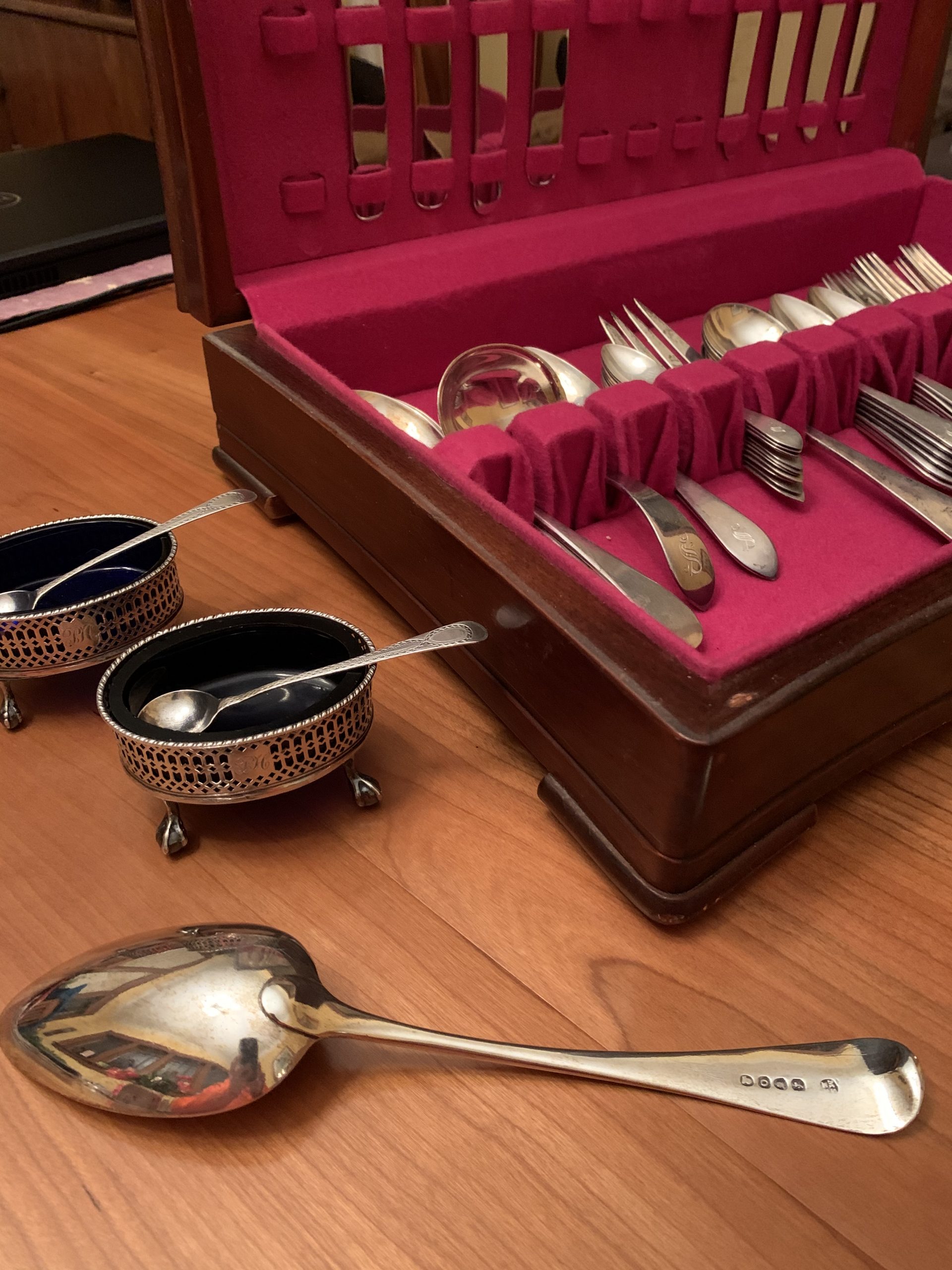Many people today run away screaming when you even say the words “antique silver,” much less suggest they buy some for daily use in their homes. They may admit that although a table set with old silver is gorgeous, they often assume that caring for it is a laborious nuisance. But like many things we are afraid of, the tarnished reputation of vintage silver is largely a myth. The incomparable beauty of silver, especially in candlelight, far exceeds the effort to maintain it.
Tarnish on silver is caused by sulfur and humidity in the air reacting with the copper in the sterling alloy (sterling is 92.5 % pure silver and 7.5 % copper). In the 1800s, the Industrial Revolution spewed tons of noxious sulfurous emissions into the air from the burning of coal and petroleum, compromising both human health and silverware well into the 20th century. But today, the air we breathe is more regulated and therefore much cleaner, and thanks to air-conditioning in our modern homes, the chemical reaction that causes tarnish occurs very, very slowly these days. I have sterling that’s more than 200 years old and I simply give it a quick wipe with Goddard’s Silver Polishing Cloth once or twice a year. The patina is spectacular!
Patina on old silver, as with most antiques, is a good thing. Overcleaning silver will take that desirable patina right off and it will take literally decades to develop again. That thin film of tarnish doesn’t hurt the silver per se, but removing it too aggressively or too often can cause serious, irreparable damage. Certainly, silver neglected for a very long time or allowed to go completely black may never fully recover–tarnish is a type of corrosion, after all. The key is to never let it get that far.
The best way to keep silver looking luxurious is to use it! Simply hand wash it, dry it really well, keep it in an anti-tarnish bag or a drawer or box lined with Pacific Silvercloth. Give it a gentle cleaning with a silver polish a couple of times a year at most (Goddard’s is a widely available and inexpensive brand) and you’ll see that your silver is no more trouble than stainless flatware. Just never put silver in the dishwasher, never wrap it in plastic (which contains sulfur and traps moisture—double bad), and never store it in a humid area like an attic or basement or shed.
So don’t deny yourself the beauty and graciousness of everyday silver due to fear. Like tarnish, our fears always seem to grow worse the less we understand them.

